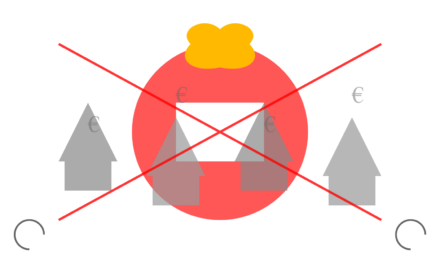In an industry drowning in buzzwords and half-baked platforms, Stake Engine—launched by the crypto casino juggernaut Stake—is making waves with its bold promise: a developer-first Remote Gaming Server (RGS) that hands creators the keys to the world’s largest online casino. With a reported 300 billion bets processed and a player base exceeding 20 million, Stake’s infrastructure is undeniably a heavyweight. But does Stake Engine live up to its lofty claims of redefining game development, or is it just another shiny tool in an overcrowded toolbox? Let’s cut through the marketing fluff and dissect what’s really at play.
What Is Stake Engine? The Nuts and Bolts
Stake Engine is a next-generation RGS designed to streamline the creation, deployment, and monetization of casino games. Unlike legacy platforms that bog developers down with red tape, lengthy integrations, and restrictive templates, Stake Engine pitches itself as a no-gatekeeper zone. It’s built on the same tech stack that powers Stake’s crypto casino, handling over 1 million bets per second with a global reach. The platform’s core offerings include:
-
Full-Stack Development Tools: A front-end SDK, integrated math engine, and balancing toolkit for rapid prototyping and deployment.
-
Real-Time Analytics Dashboard: Data on player engagement, market performance, and revenue metrics, updated live.
-
Frictionless Deployment: Games can go from concept to live in days, bypassing the months-long slog of traditional RGS integrations.
-
Developer-Friendly Revenue Model: A flat 10% Gross Gaming Revenue (GGR) royalty, paid monthly, with no lockups or hidden fees.
Stake Engine’s pitch is simple: focus on building great games, and we’ll handle the rest—distribution, marketing, and infrastructure. It’s a compelling narrative, especially for indie developers and smaller studios tired of groveling for scraps in a market dominated by giants like Playtech and Evolution.
The Numbers Don’t Lie—Or Do They?
Stake Engine isn’t just talk. In the past 12 months, games built on the platform have generated a staggering $3.31 billion in turnover. Recent hits include Massive Studio’s Jawsome (#17), Serpentina (#23), and Twist’s Samurai Dogs Unleashed (#25), all ranking among Stake’s top 50 games by total bets. These aren’t flukes; they’re proof of concept that the platform can deliver visibility and revenue.
But let’s pump the brakes. While $3.31 billion sounds impressive, it’s a drop in the bucket compared to the broader iGaming market, projected to hit $145 billion by 2030. Stake’s claim of “unmatched scale” conveniently glosses over the fact that their player base, while large, is heavily crypto-centric—a niche demographic that may not translate to mainstream appeal. And those top-50 rankings? They’re impressive until you realize they’re internal to Stake’s ecosystem, not the industry at large. Context matters.
Why Stake Engine Might Actually Work
Let’s give credit where it’s due. Stake Engine tackles systemic pain points in iGaming development with surgical precision:
-
Speed to Market: Traditional RGS platforms are bureaucratic nightmares, with integration cycles that can stretch six months or more. Stake Engine’s promise of days from idea to launch is a game-changer for agile studios looking to capitalize on trends like crash games or provably fair mechanics.
-
Creative Freedom: No templates, no restrictions. Whether you’re building a slot, a card game, or something entirely new, Stake Engine doesn’t force you into a cookie-cutter mold. This flexibility is a breath of fresh air in an industry obsessed with recycling the same tired formats.
-
Revenue Transparency: The 10% GGR model is among the most competitive in the industry. Compare that to legacy platforms that often demand 20-30% or lock developers into predatory revenue-sharing deals. Monthly payouts with zero lockups? That’s a rarity worth celebrating.
-
Proven Infrastructure: Built by engineers from top studios like Massive and Twist, Stake Engine leverages the same tech that’s handled 300 billion bets. It’s battle-tested, scalable, and optimized for the high-stakes world of crypto gambling.
Stake’s parent company, Easygo, isn’t messing around. Their Chief Strategy Officer, Brais Pena, calls it “a launchpad for the next generation of iGaming creators.” Hyperbole aside, the platform’s focus on removing barriers—technical, financial, and bureaucratic—aligns perfectly with the needs of a new wave of developers who value speed and autonomy.
The Red Flags You Can’t Ignore
Now, let’s get brutally honest. Stake Engine isn’t a flawless savior. Here are the cracks in the facade:
-
Crypto-Centric Ecosystem: Stake’s player base is predominantly crypto-savvy, which limits the appeal of games built for their platform. If you’re a developer aiming for mass-market adoption, you’re tethered to a niche audience unless Stake expands its fiat offerings.
-
Opaque Access: The SDK is currently invite-only, with developers directed to a waitlist on engine.stake.com. For a platform preaching openness, this gatekeeping feels like a contradiction. Transparency about the onboarding process would go a long way.
-
Regulatory Risks: Stake operates under a Curaçao license, which is notoriously lax. While this gives them flexibility, it also raises questions about long-term compliance in stricter markets like the UK or EU. Developers banking on Stake Engine could find their games sidelined if regulatory winds shift.
-
Market Saturation: The iGaming space is brutally competitive, with heavyweights like NetEnt, Microgaming, and Pragmatic Play dominating. Even with Stake’s marketing muscle, breaking through the noise isn’t guaranteed—especially for unproven studios.
And let’s not kid ourselves: Stake’s motives aren’t altruistic. By opening their RGS to third-party developers, they’re diversifying their game portfolio without footing the bill for in-house development. It’s a smart move, but it also means developers are essentially subsidizing Stake’s growth. The 10% GGR sounds generous until you realize it’s still a tax on your creativity.
The Bigger Picture: A Paradigm Shift or a Flash in the Pan?
Stake Engine’s launch comes at a pivotal moment for iGaming. The industry is grappling with rising player acquisition costs, regulatory crackdowns, and a shift toward personalized, data-driven experiences. Platforms like Stake Engine, which prioritize speed, scalability, and developer empowerment, could reshape how games are built and monetized.
But systems thinking reveals a deeper truth: success hinges on execution. Stake Engine’s infrastructure is world-class, but its long-term viability depends on three critical factors:
-
Player Retention: Can Stake keep its 20 million players engaged with a flood of new games, or will quality control suffer as the platform scales?
-
Developer Adoption: Will enough studios—big and small—buy into the platform to create a diverse, high-quality game catalog?
-
Market Expansion: Can Stake break out of its crypto niche and compete in fiat-heavy markets without alienating its core audience?
If Stake nails these, Engine could become the Unity of iGaming—a platform that democratizes development and spawns a new generation of hits. If they stumble, it’s just another RGS collecting dust.
Success Stories: Proof in the Pudding
The early wins are hard to dismiss. Massive Studio and Twist have already leveraged Stake Engine to launch chart-toppers like Jawsome, Serpentina, and Samurai Dogs Unleashed. These games aren’t just padding the catalog—they’re driving real bets and revenue. For context, Jawsome alone ranks higher than many established titles on Stake’s platform, proving that Engine can elevate new IPs.
Still, these are hand-picked success stories. We don’t hear about the games that flopped or the developers stuck in onboarding limbo. A truly open platform would share the full picture—warts and all.
Should You Build on Stake Engine?
If you’re an indie developer or a nimble studio, Stake Engine is worth a hard look. The low barrier to entry, robust tools, and lucrative revenue model make it a compelling alternative to legacy RGS platforms. But don’t drink the Kool-Aid blindly. Do your homework:
-
Assess Your Audience: If your game thrives in a crypto-heavy market, Stake Engine is a no-brainer. If you’re targeting fiat players, proceed with caution.
-
Vet the Fine Print: The 10% GGR sounds great, but clarify ownership, IP rights, and exit clauses before signing on.
-
Plan for Scale: Stake’s infrastructure can handle millions of bets, but can your game stand out in a crowded catalog?
For larger studios, the calculus is trickier. You’ll need to weigh the benefits of Stake’s reach against the risk of tying your brand to a Curaçao-based operator with regulatory question marks.
The Verdict: Promising, But Not Perfect
Stake Engine is a bold swing at fixing a broken system. Its developer-first ethos, lightning-fast deployment, and transparent revenue model set a new standard for RGS platforms. But it’s not a magic bullet. The crypto-centric audience, limited SDK access, and regulatory uncertainties are real hurdles that could trip up even the most promising studios.
In an industry that chews up innovation and spits out mediocrity, Stake Engine has the potential to be a catalyst—if it can deliver on its promises and navigate the minefield of iGaming’s systemic challenges. For now, it’s a high-risk, high-reward bet. Developers, place your chips wisely.
Want to build on Stake Engine? Visit engine.stake.com for documentation and waitlist details. Got thoughts on the platform? Sound off in the comments below.





